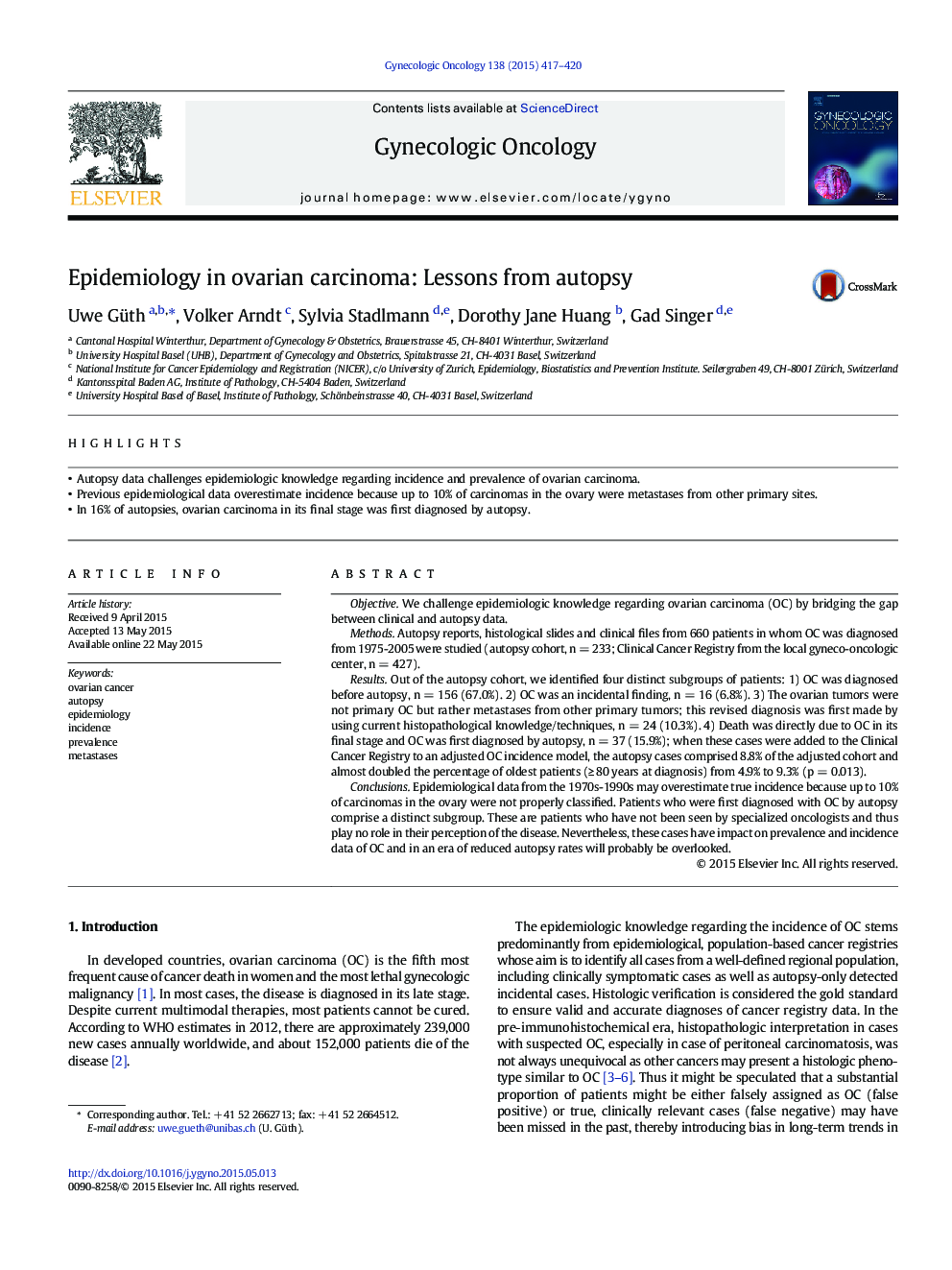| Article ID | Journal | Published Year | Pages | File Type |
|---|---|---|---|---|
| 3943170 | Gynecologic Oncology | 2015 | 4 Pages |
•Autopsy data challenges epidemiologic knowledge regarding incidence and prevalence of ovarian carcinoma.•Previous epidemiological data overestimate incidence because up to 10% of carcinomas in the ovary were metastases from other primary sites.•In 16% of autopsies, ovarian carcinoma in its final stage was first diagnosed by autopsy.
ObjectiveWe challenge epidemiologic knowledge regarding ovarian carcinoma (OC) by bridging the gap between clinical and autopsy data.MethodsAutopsy reports, histological slides and clinical files from 660 patients in whom OC was diagnosed from 1975-2005 were studied (autopsy cohort, n = 233; Clinical Cancer Registry from the local gyneco-oncologic center, n = 427).ResultsOut of the autopsy cohort, we identified four distinct subgroups of patients: 1) OC was diagnosed before autopsy, n = 156 (67.0%). 2) OC was an incidental finding, n = 16 (6.8%). 3) The ovarian tumors were not primary OC but rather metastases from other primary tumors; this revised diagnosis was first made by using current histopathological knowledge/techniques, n = 24 (10.3%). 4) Death was directly due to OC in its final stage and OC was first diagnosed by autopsy, n = 37 (15.9%); when these cases were added to the Clinical Cancer Registry to an adjusted OC incidence model, the autopsy cases comprised 8.8% of the adjusted cohort and almost doubled the percentage of oldest patients (≥ 80 years at diagnosis) from 4.9% to 9.3% (p = 0.013).ConclusionsEpidemiological data from the 1970s-1990s may overestimate true incidence because up to 10% of carcinomas in the ovary were not properly classified. Patients who were first diagnosed with OC by autopsy comprise a distinct subgroup. These are patients who have not been seen by specialized oncologists and thus play no role in their perception of the disease. Nevertheless, these cases have impact on prevalence and incidence data of OC and in an era of reduced autopsy rates will probably be overlooked.
